JOURNEY WITH JESSICA
ACCESS and “Crip Time”
In the most recent Beacon Church Collaborative quarterly zoom meeting, discussion was on the common challenges in ministering alongside people with disabilities. This was led by Bill Gaventa, who will also join us at Bridge’s Annual Conference October 17 and 18. Bill asked members to bring in common ministry challenges they find while ministering alongside people with disabilities. One big challenge brought to the table was transportation. ACCESS transportation is unreliable. People are dropped off super early and the wait for a pick-up can be long and tedious. It can be hard to find volunteers willing to wait with the individual and people don’t feel comfortable leaving someone alone, uncertain of when or if a ride will come.
As a reluctant ACCESS user, I agree. For many disabled people, transportation is a major concern. I completely understand why ACCESS exhausts you and feels burdensome. However, as I invited those on the Beacon Church Collaborative call, I’d like to invite you to use this as an opportunity for empathy and solidarity, a gateway to experience the world through the life-experience of your disabled friends.
In the disabled world, there is something called “Crip Time.” According to disability advocate Ellen Samuels, “Crip Time can mean the extra time needed to perform a task compared to ableist time. This extra time does not only depend on a person’s slower pace but just as much on ableist barriers that make things take longer for example, inaccessible buildings or waiting for transportation to come.” Attending church for a disabled person might require waiting for an attendant to show up to assist in dressing and preparing for the day. Homes are regularly short staffed so that could require waiting and wondering if and when someone is coming, possibly stuck in bed.
Then we are left waiting for ACCESS to pick us up. There is a 30-minute window on each end of a trip and ACCESS expects you to be waiting and ready, ideally outside. However, that window could be hours before church starts, even if it’s only a fifteen minute drive away. Once loaded on ACCESS, it’s a jerky roller coaster of a ride, possibly all over the city, picking up and dropping off others. On a return, I’ve had a driver pass right by my driveway to go pick someone else up.
Arrival time is also random. Technically ACCESS is supposed to drop us off within a 30 minute window, but I’ve been dropped off an hour and a half early. When booking you can now tell them if you cannot arrive more than thirty minutes early. Then they have to let you wait in the bus, but drivers will try to guilt you into getting out and waiting outside the locked door.
After church, a leisurely fellowship isn’t an option for ACCESS riders. Instead, it is a rush to the door to settle in for another tedious wait for another wild ride through the city that will hopefully, at some point during the day, end at home.
When this is someone’s life day in and day out, it is very easy to displace the inequitable, burdensome structures onto the person, meaning the disabled person becomes the burden. Another definition for Crip Time is “society’s dominant understanding of this extra time as wasted time, in the sense of being slow and unproductive and not living up to the norm.” This is the definition we must push back on. The way we can do that is to enter into crip time as a sacred time. Step away from the pressing schedules, slow down, and claim space as holy time to build relationships. Let yourself be discipled by your disabled friend who has learned to embrace this timelessness. As Alison Kafer says, “rather than bend disabled bodies and minds to meet the clock, crip time bends the clock to meet disabled bodies and minds.”
I started attending church through a Catholic Community Services Volunteer Chore worker named Mary. She invited me to come to church with her. At that time in my life, her picking me up and taking me to church was the only activity I was doing outside of attending to my healthcare needs. If she wasn’t willing and able to take me to church, I wouldn’t have had the capacity to pursue it. Even after she moved and it was out of the way, Mary continued to take me to church because she knew that connection was important, and when I moved, she helped me explore church options near me.
Having an accepting community where I am something more than my medical diagnosis and deficits was fundamental to forming the person I am today. Living life with disabilities has made me the minister I am today. I am acutely aware of those the church leaves behind. Offering rides and waiting with individuals for ACCESS aren’t the inconvenient details of including people with disabilities— it is the core of the ministry. It is how we show people that they are welcome and belong. Just as they are, whatever the time.
Bridge Blogger Jessica Thompson
Categorised in: Journey with Jessica
